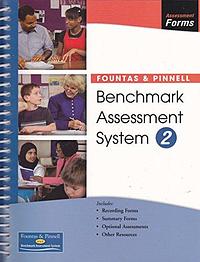You need to sign in or sign up before continuing.
Take a photo of a barcode or cover
1 review for:
Fountas and Pinnell Benchmark Assessment System 2: Grades 3-8, Levels L-Z
Irene C. Fountas
1 review for:
Fountas and Pinnell Benchmark Assessment System 2: Grades 3-8, Levels L-Z
Irene C. Fountas
Being a "Dominie Dominatrix" I was reluctant to switch over to F&P assessments. However, since our district is moving to LLI for Tier 2 intervention, I know teachers need an assessment that assesses their instruction.
Pros:
1. The texts aren't as complex and varied genres as Dominie, so the oral reading goes more quickly.
2. The student only has to read a few pages aloud, so the oral reading goes more quickly.
3. There are many resources to support the assessments in order to guide instruction such as The Continuum of Literacy, the Prompting Guide, Teaching for Comprehension & Fluency, Jennifer Serravallo's The Reading Strategies Handbook,etc...
4. There are only 3-5 questions, so the entire assessment goes more quickly.
Cons:
1. The texts aren't as complex and varied as Dominie, so the assessment is only on Fiction or straight Non-fiction.. no newspaper articles, myths, fantasy, etc...
2. There are only two books per benchmark. So, if a student doesn't "pass" a level, then there are no bridging books ( a half-step up or down) to use, only a whole level.
3.The comprehension conversation is vague and lends itself for interpretation as to whether or not the reader understands the text. I scored a reader as limited comprehension because I felt based on her answers, that she didn't truly understand the big concepts, only in terms of the text. Another teacher scored her as passing. However, based on the webinar, the Comprehension Conversation will be a scorable rubric in the updated version.
For helpful FAQ's visit http://www.heinemann.com/fountasandpinnell/faqs_bas.aspx
Pros:
1. The texts aren't as complex and varied genres as Dominie, so the oral reading goes more quickly.
2. The student only has to read a few pages aloud, so the oral reading goes more quickly.
3. There are many resources to support the assessments in order to guide instruction such as The Continuum of Literacy, the Prompting Guide, Teaching for Comprehension & Fluency, Jennifer Serravallo's The Reading Strategies Handbook,etc...
4. There are only 3-5 questions, so the entire assessment goes more quickly.
Cons:
1. The texts aren't as complex and varied as Dominie, so the assessment is only on Fiction or straight Non-fiction.. no newspaper articles, myths, fantasy, etc...
2. There are only two books per benchmark. So, if a student doesn't "pass" a level, then there are no bridging books ( a half-step up or down) to use, only a whole level.
3.The comprehension conversation is vague and lends itself for interpretation as to whether or not the reader understands the text. I scored a reader as limited comprehension because I felt based on her answers, that she didn't truly understand the big concepts, only in terms of the text. Another teacher scored her as passing. However, based on the webinar, the Comprehension Conversation will be a scorable rubric in the updated version.
For helpful FAQ's visit http://www.heinemann.com/fountasandpinnell/faqs_bas.aspx

